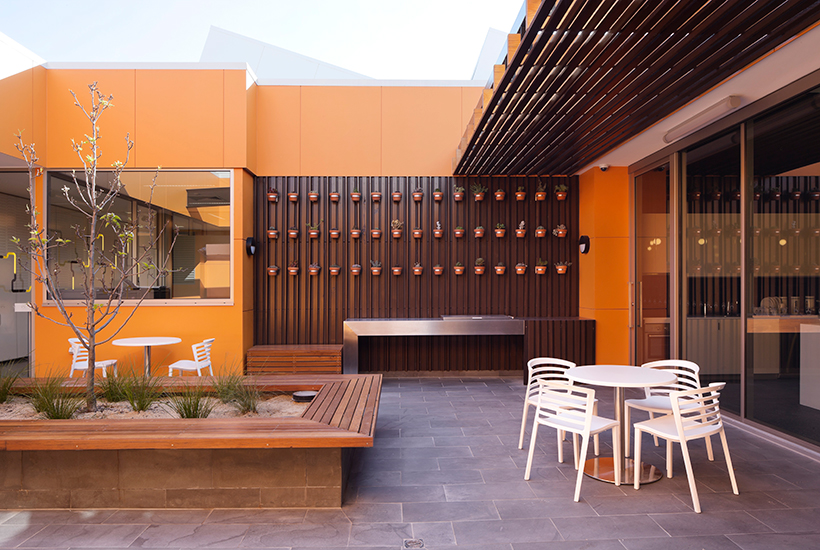COVID-hit offices a silver lining for social housing

While the economic impact of the coronavirus pandemic continues to be felt across Australia, it appears the COVID-19 cloud might have a shiny lining.
The crisis has prompted a conversation about converting empty offices – abandoned as remote working became the norm – into much-needed social housing.
The rethink on how to make use of now-empty commercial spaces, and return income to property owners, as well as solve a serious social problem, is happening across the globe. And there is action on the ground, too.
In South Korea, the government late last year announced plans to add more than 100,000 homes to its public housing stock within the next two years by buying empty offices and hotels.
And in Singapore, incentives are being offered to redevelop office space in CBDs, with a vision for more residences, shops, restaurants and even indoor farms.
In Australia, Emma King, chief executive of the Victorian Council of Social Services, said “big employers giving up office space creates a significant opportunity for more social housing” and should be pursued.
“Lots of office buildings are well located, close to services, transport and jobs. This makes them ideal sites for social housing, allowing people to live and work in their local community,” Ms King said.
“If we’re smart and quick, we can take advantage of this seismic shift and create good homes for people in need.”

Empty offices could be converted into much-needed social housing. Picture: Getty
In Victoria, the state government and several councils are making “spot purchases” to this end, she said.
“[They’re] investigating new ways to encourage social housing, through direct financial incentives and measures like inclusionary zoning,” Ms King said.
A feasible idea
Amanda Steele, the Pacific head of CBRE’s property management business, said while the topic isn’t as hot in the industry as it was when the pandemic first hit, it’s feasible to convert offices into social housing.
“It’s absolutely viable. It was viable before the pandemic and it’s viable now. We have some of the most creative and adaptive property owners in the world and some have looked at that. The key to making it happen, in part, is government incentives,” Ms Steele said.
And owners can still get decent returns, she said.
“Of course, it’s more difficult to make money via this model, but that doesn’t mean it’s not possible. The clever and creative will always find a way to make it work.”
Property owners and investors will have to be convinced of the value of making the switch.
“In my experience, you have to provide people with the ability to make the right investment decision. It’s about showing the return in the long-run and the social good, that it’s the right the thing to do,” Ms Steele said.
Those with a long-term view on their real estate strategy are most likely to find the approach appealing, she added.
A time-saving “opportunity”
Lei Feng, managing director of Melbourne-based property development advisory firm Preer, agreed such adaptation can be successful, if executed correctly.
“The idea of conversion involves a beneficial and durable use of the location and building, implies less income disruption than redevelopment and can have high social and financial benefits.
“In fact, cities like London, Toronto and New York have delivered many successful projects by reviving existing vacant office buildings into residential housing communities, while addressing critical housing shortage issues,” Mr Feng said.
He said the benefits of converting office into residential space are obvious.
“Due to the existing structure, provided residential use is allowed under the existing zoning, the short development timespan from the first sketch to delivery of the apartments is considered an opportunity.
“By maintaining the current building structure, stairs and elevators, not only is time saved, because the main structure is already there, but also because of this, less days will be lost due to bad weather,” Mr Feng said.
A greener approach to urban development
Conversion of vacant offices is also considered a sustainable alternative to demolition and building anew, he said, saving on building materials and transportation and producing less waste than demolition and new construction.
“It’s also a greener and more eco-friendly approach to urban development and less disruptive to all those around the area,” he said.

The cost to covert empty offices into social housing would be significantly less that building from scratch. Picture: Getty
Given the many variable factors, Mr Feng was unable to put a figure on the cost of office-to-housing conversion, but said the major cost would be façade alteration, followed by interior walls. “These two alone account for nearly 44% of the total building cost,” he said.
While the cost for interior walls depends on the new function and can easily be predicted, the costs related to the façade depend on the building shape, technical state and quality of the existing building and also on the demand for external appearance, comfort and quality of the converted building, Mr Feng added.
“The necessity for façade alterations should therefore be thoroughly assessed when studying office-to-housing conversion potential. Assessing these factors in the initial phase can contribute greatly to the viability of the office conversion.”







